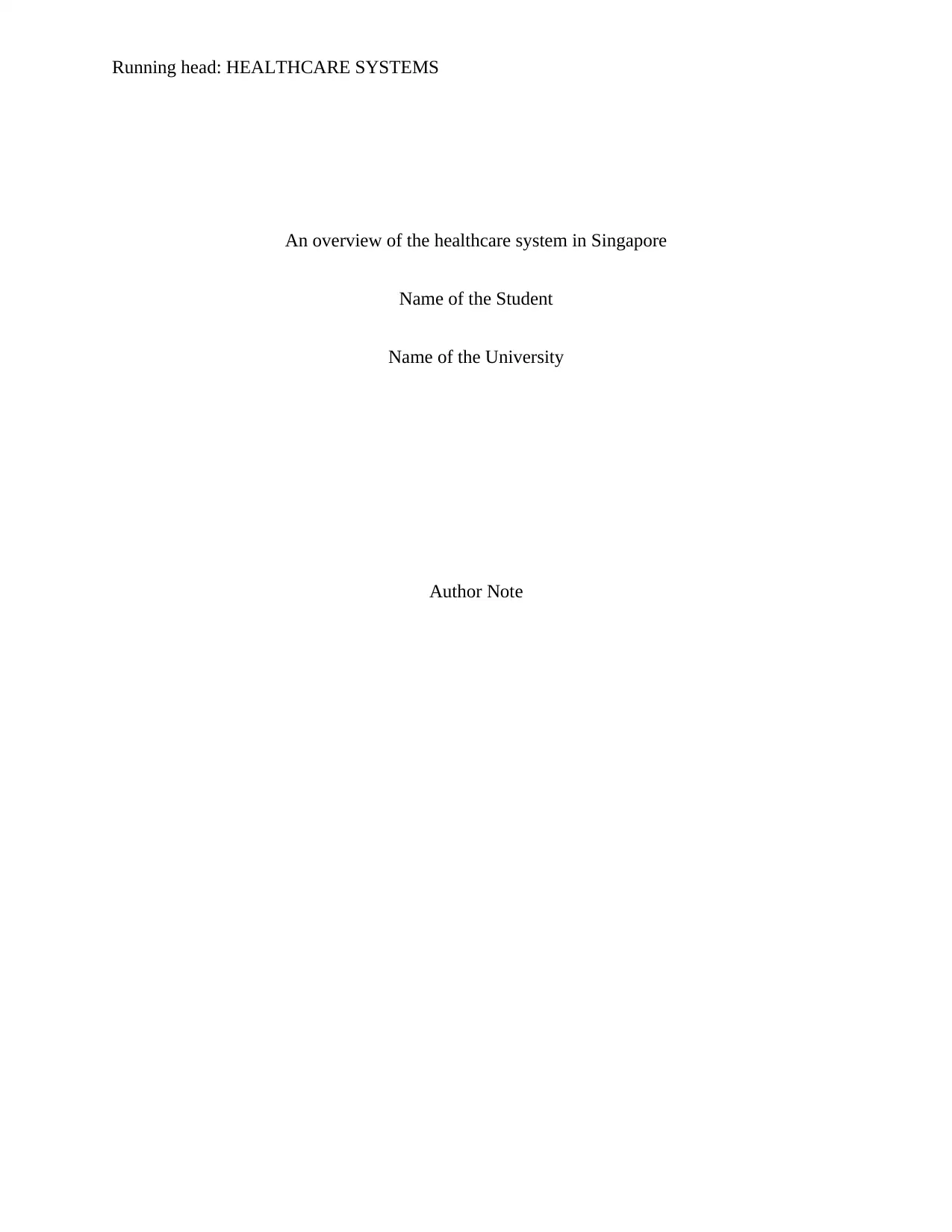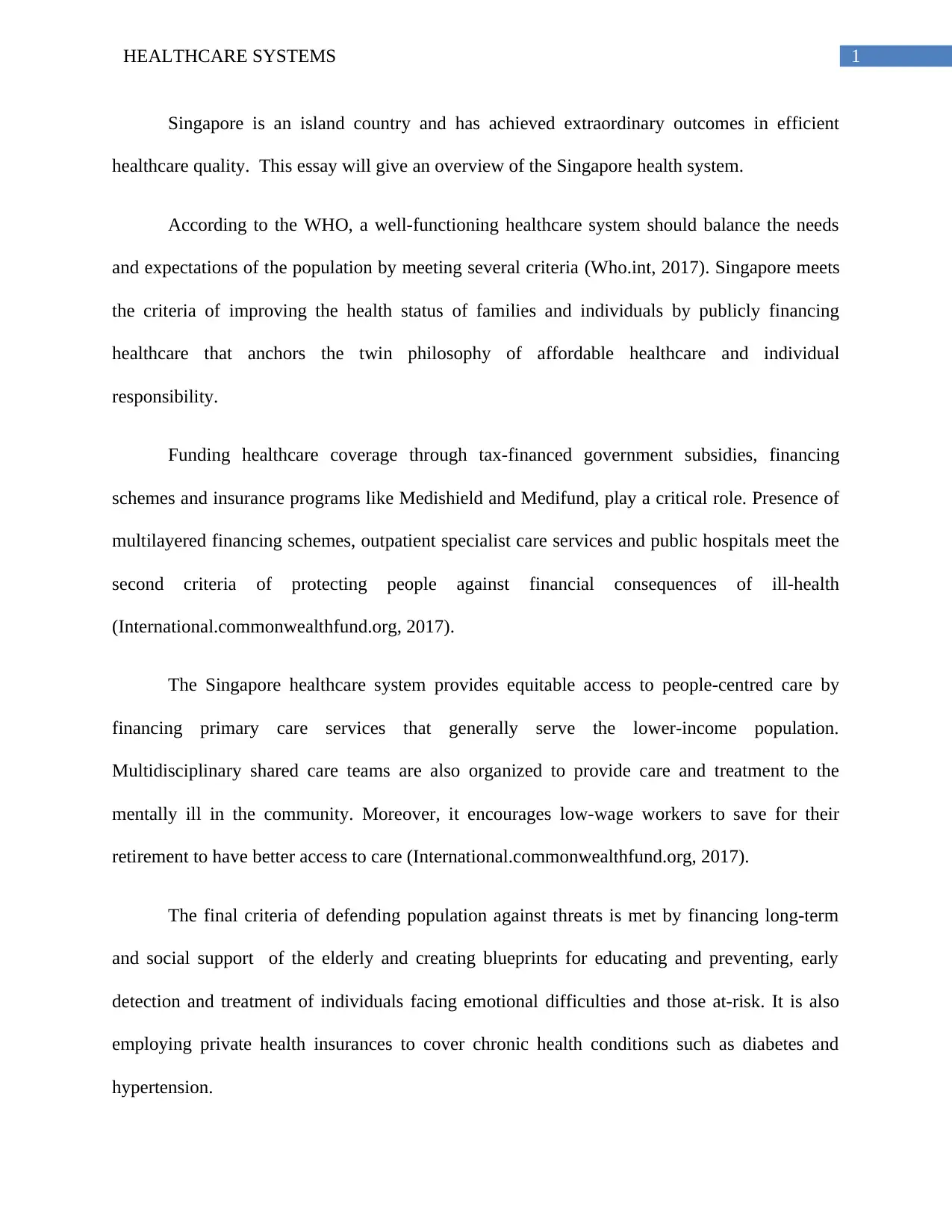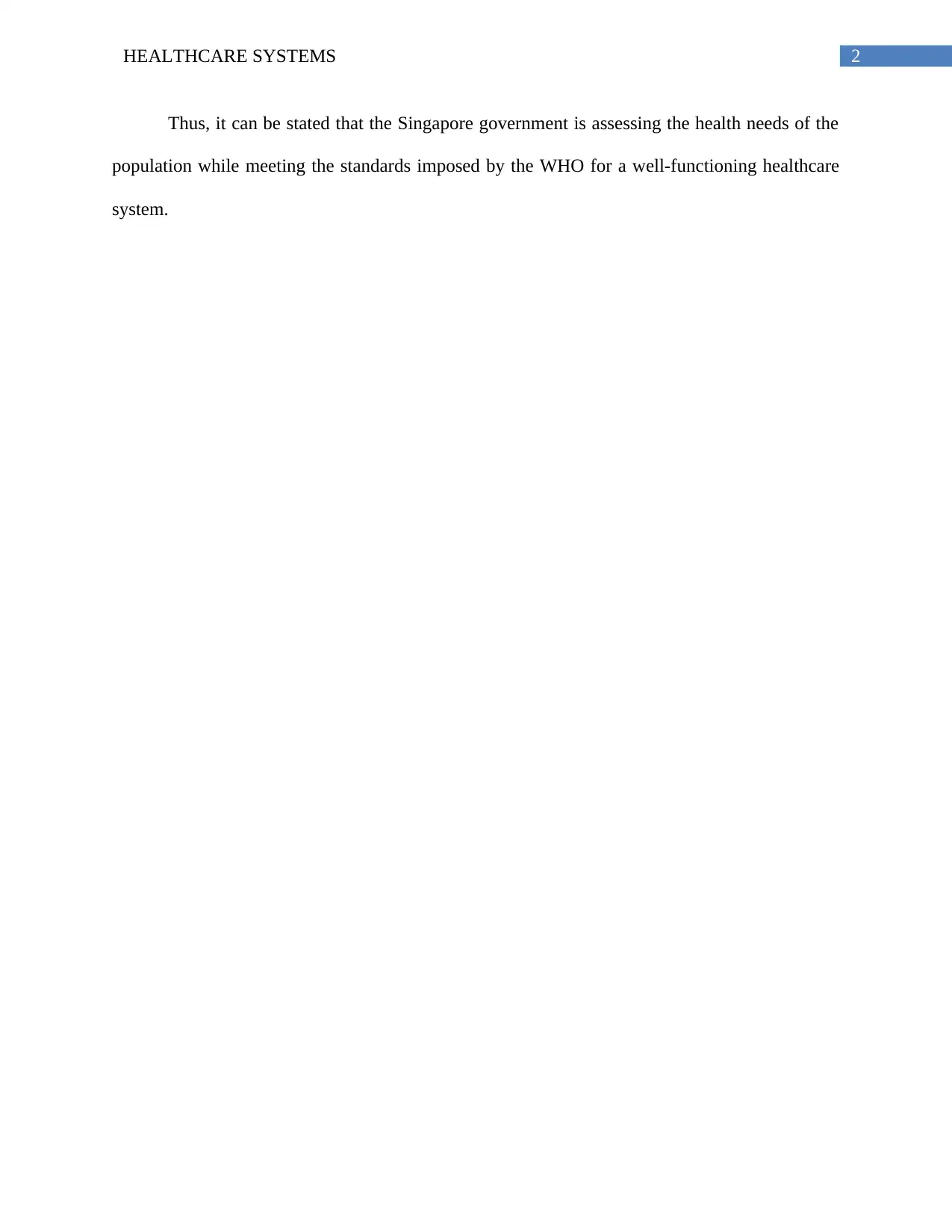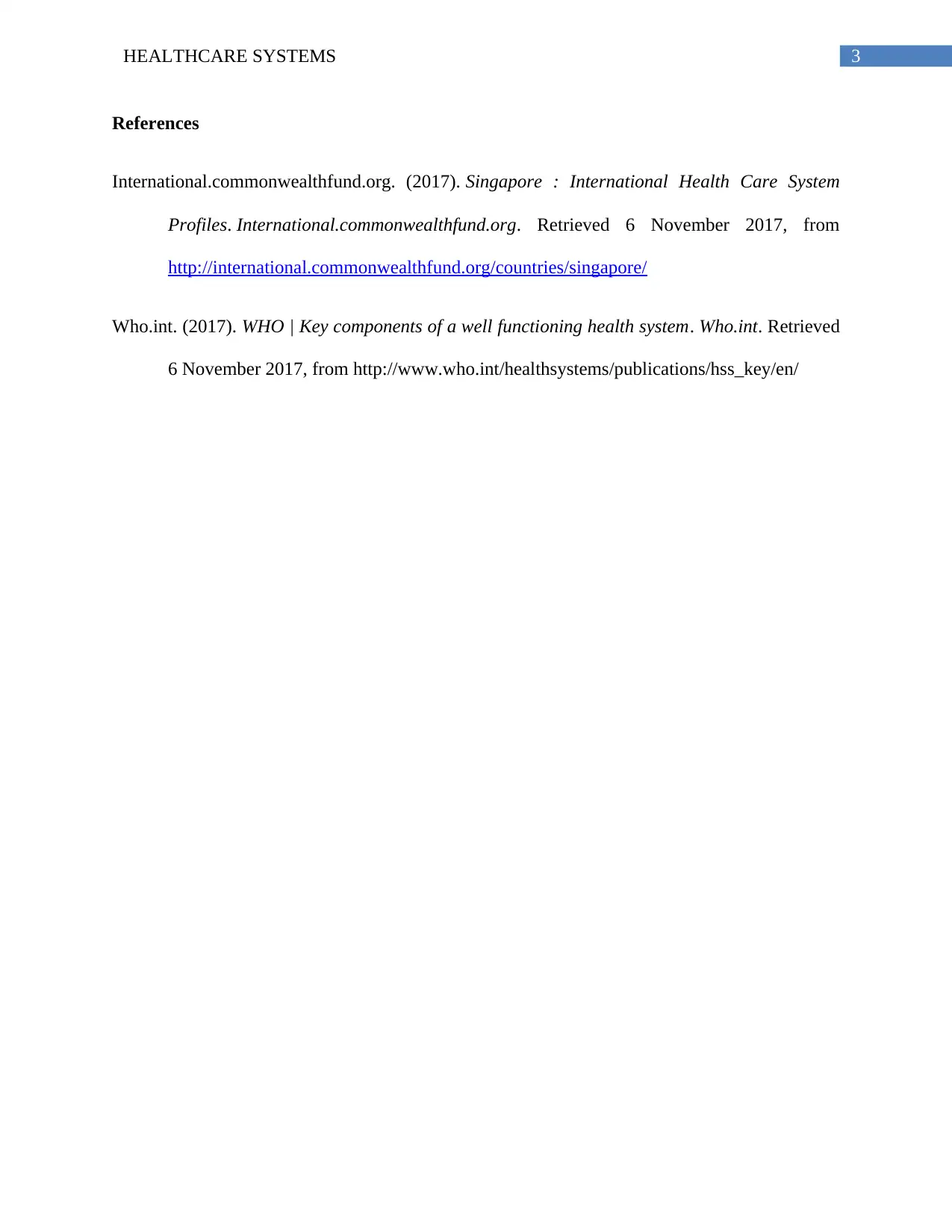Singapore Healthcare System: Analysis, Evaluation, and Insights
VerifiedAdded on 2020/04/21
|4
|376
|180
Report
AI Summary
This report provides an overview of the healthcare system in Singapore, focusing on its structure, financing, and impact on the population. It highlights how Singapore's healthcare system balances affordability and individual responsibility, with the government financing healthcare through tax-financed subsidies and insurance programs like Medishield and Medifund. The report discusses the provision of equitable access to care, particularly for the lower-income population, and the implementation of multidisciplinary care teams. Furthermore, it addresses the system's approach to long-term care, social support for the elderly, and preventative measures. The report references the World Health Organization's (WHO) criteria for a well-functioning healthcare system, indicating that Singapore's system aligns with these standards by addressing the health needs of its population.
1 out of 4











![[object Object]](/_next/static/media/star-bottom.7253800d.svg)